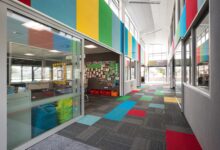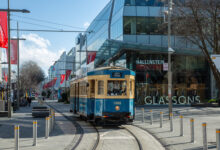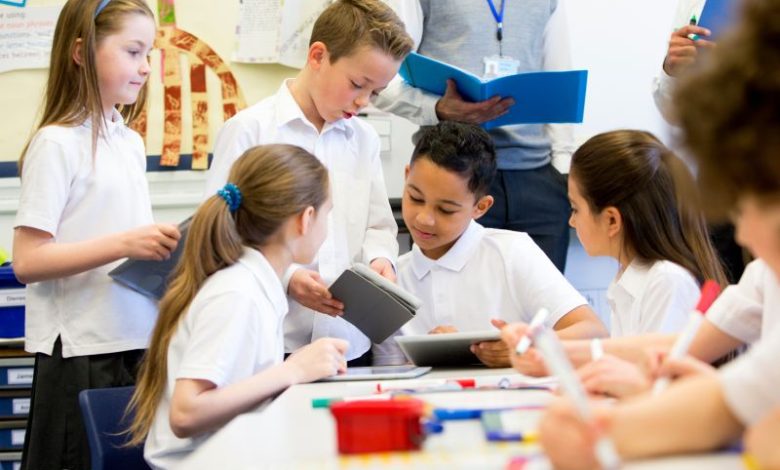
Since the 70s, New Zealand has joined many other countries in implementing new classroom designs that move away from the traditional, siloed and closed structures that characterised schools of the previous centuries.
From the 1980s onward, new classrooms and teaching spaces in Aotearoa have been built to be more open, flexible spaces that enable a variety of configurations and teaching styles.
Read the latest print edition of School News HERE
But after decades of pivoting toward these new teaching spaces and styles, some educators and researchers have begun speaking out against such learning environments, claiming that they are counterproductive to effective learning, and citing a lack of research on the effect of such spaces on learning outcomes. Yet other educators and researchers argue that modern learning environments enable better pedagogy and empower learners. Which is the truth?
This history of modern learning environments in Aotearoa
In 2011, the Ministry of Education released its School Property Strategy 2011 – 2021. The strategy states that one of its goals is to create modern learning environments (MLE) that suit the changes to teaching strategies that have occurred since the turn of the century.
“Modern schools comprise of flexible teaching zones that can easily be reconfigured and used in a variety of ways… modernising classrooms and converting them into modern teaching spaces will be a high priority over the coming years.”
Those that critique the MLE point to this strategy as the beginning of an “experiment” on children regarding learning spaces.
The failure of open plan
Modern learning environments have in some ways evolved from the open-plan classrooms of the 70s, widely heralded as a “failure” by educators.
Open-plan classrooms were large classrooms where more than one classroom and teacher operated simultaneously. They were meant to increase cooperation among teachers and encourage professional development.
In 1986, the New Zealand Council for Educational Research (NZCER) published a report titled “Ten Years of Open Plan”, which reflected on lessons learned from educators teaching in open plan units. The report estimated that there were about 44,000 to 50,000 students, or around 10 percent of primary school students learning in these environments, supported by almost 2000 teachers.1
But many open plan classrooms failed, as teachers had been trained to work alone in single-cell units rather than collaboratively. The spaces themselves were noisy and not suited to all learners. However, experienced teachers reportedly preferred these learning spaces over traditional classrooms. Newer or more inexperienced teachers were likely to be overwhelmed.
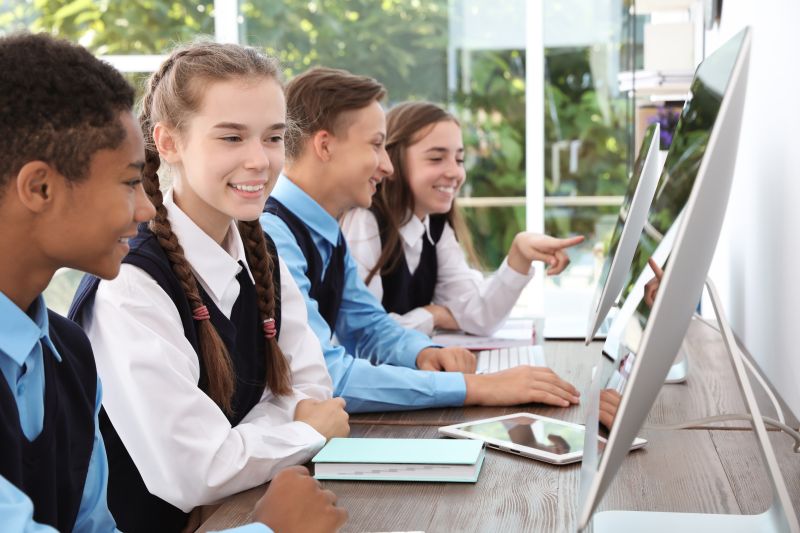
From open plan to MLE
Open-plan classrooms exemplified many of the issues and problems which critics currently level against the MLEs.
But MLEs differ from open-plan classrooms by having a variety of features that enable flexibility of configuration and teaching styles. This means MLEs are not necessarily “open-plan” but have a larger space that can be converted between many different configurations, including an open-plan style room.
In recent decades, schools due for upgrades or rebuilds have been encouraged to take up MLE. The Ministry of Education has published guidelines for schools considering implementing MLE-style additions, though final designs and decisions about new builds have remained with individual school boards.
These spaces are characterised by large areas that accommodate a range of activities, including a central open space and smaller break-out spaces. Flexible and mobile elements like partitions, whiteboards on wheels and flexible furnishings are available to accommodate different configurations and activities. Visual transparency is prioritised through use of glass and fewer walls, and technology is integrated into the space.
Modern learning environments aim to retain the benefits of open-plan classrooms like collaborative teaching and learning, while mitigating issues like noise and distraction while enabling a variety of activities to keep students engaged.
The criticisms
Recently, a slew of criticisms on MLE have appeared in the media. One article in the The Post last year suggested that MLE was “a social experiment on a generation of children” and pointed to cases of children who struggled to learn within the format.
Schools themselves also report struggling with MLE as class sizes swelled to 50 or 60 children, creating an atmosphere that was counterproductive to learning and distracting to children. Teachers said they struggled with the format and implementing techniques like collaborative teaching, leading to claims that teachers were not being properly supported by the Ministry of Education to effectively teach utilising MLE spaces.
Critics also point to the lack of evidence showing that MLE contributes to positive academic outcomes.
These struggles reflect the lessons learned from the open-plan classrooms of the last century, leading critics to mistakenly conflate the two.
Speaking to Stuff, former principal of Island Bay School Perry Rush said, “Often times when you hear teachers say it’s not really working, what you’re really hearing is ‘the way I used to teach isn’t able to be effective in a new environment.’
“Where is the funding and support from the ministry for schools and teachers?”
Classrooms of the 21st century
The debate on modern learning environments is often framed as a battle between new environments and traditional, single-cell classroom blocks.
Innovative learning environments are too noisy, distracting and difficult to manage, claim critics, especially for neurodiverse learners and those with additional support needs. Additionally, there’s little evidence to link new MLEs to improved learning outcomes. Finally, there’s little agreement on what learning outcomes we should be focused on and how they should be measured. Is the ultimate goal of an MLE to improve academic achievement, or to develop hard-to-measure student competencies?
Although these criticisms attack MLEs, they do little to support traditional, single-cell classroom blocks.
Research into effective pedagogy highlights the relationships built between teachers and students. It’s well known that effective teachers build positive relationships with their students and set high expectations. Educators repeat again and again that quality of teaching is the most important factor for students.
Regarding physical space, improvement to student outcomes is linked to adequate light, acoustics, and thermal temperatures of a teaching area.2 These basic physical qualities are mandated by the Ministry of Education when designing and building new classrooms, though physical layout is not.
Another report commissioned by the Ministry of Education notes that there is no definitive answer to whether open-plan learning effects student achievement either negatively or positively. There are many confounding factors to whether MLEs improve or detriment student outcomes, not least of which are the teaching programmes being deployed within such spaces. However, MLEs do support many different learning activities and allow flexibility of instruction. They also support student-centred learning and have been shown to foster creativity in students.3
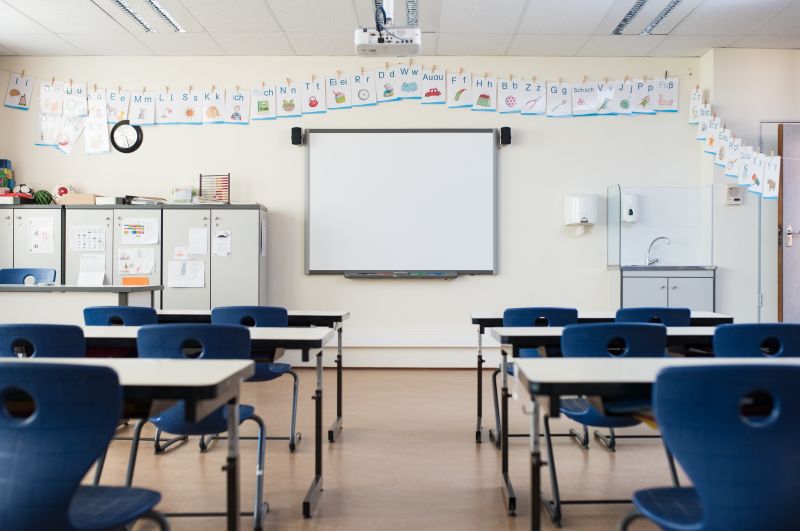
Accompanying the slew of criticisms on MLE are reports of some schools modifying their MLEs with partitions to create smaller sections. This is framed as a return to single-cell traditional classrooms and proof that MLE should be abandoned. But many of these modifications are simply an improvement on the flexibility of the space in question, enabling greater partitioning and sectioning of the space and moving from a more open-place configuration to a truer version of the MLE.
Tāhunanui School in Nelson is one example, where sliding doors were installed between classes that were initially configured in an open-plan block. It was heralded by media as a return to traditional classrooms, but the space is still used as an MLE with flexible configurations enabled by the sliding doors.
Even those who have leaned toward traditional teaching spaces concede some benefits of MLE, including the potential for improved collaboration between teachers3.
Ultimately, it is up to the individual school to ensure that their teaching spaces reflect their vision for learning, and that teachers are adequately equipped for effective teaching, no matter their space. In a further echo of lessons learned from the open-plan classrooms of the late 20th century, teachers moving from a traditional classroom to an MLE have expressed frustration around steep learning curves with using the new space, though most ultimately say they wouldn’t go back to the traditional blocks.4
Fundamentally, the philosophy that underpins MLEs is flexibility. It’s a concept that’s arisen from modern pedagogies and a movement away from the rigidity that characterised schooling of the previous centuries.
But the debate seems to get it wrong in the implication that it must be one or the other. Education must continue to adapt alongside new technologies and research, with MLEs being just one iteration of a wider change in approach to teaching and learning.
References
1Cameron, Peter and Graham Robinson. 1986. “Ten Years of Open Plan”. New Zealand Council for Educational Research. Wellington, New Zealand.
2Wall, Gabrielle.2015. “Modern Learning Environments: Impact on student engagement and achievement outcomes.”
3Wilson, Mark. 2015. “Investigating the effectiveness of modern learning environments on improving student learning and achievement.” Sabbatical Report, Cashmere High School. Christchurch, New Zealand.
4Redmond, Adele. 2017. “Teachers struggle with modern learning environments.” Stuff








